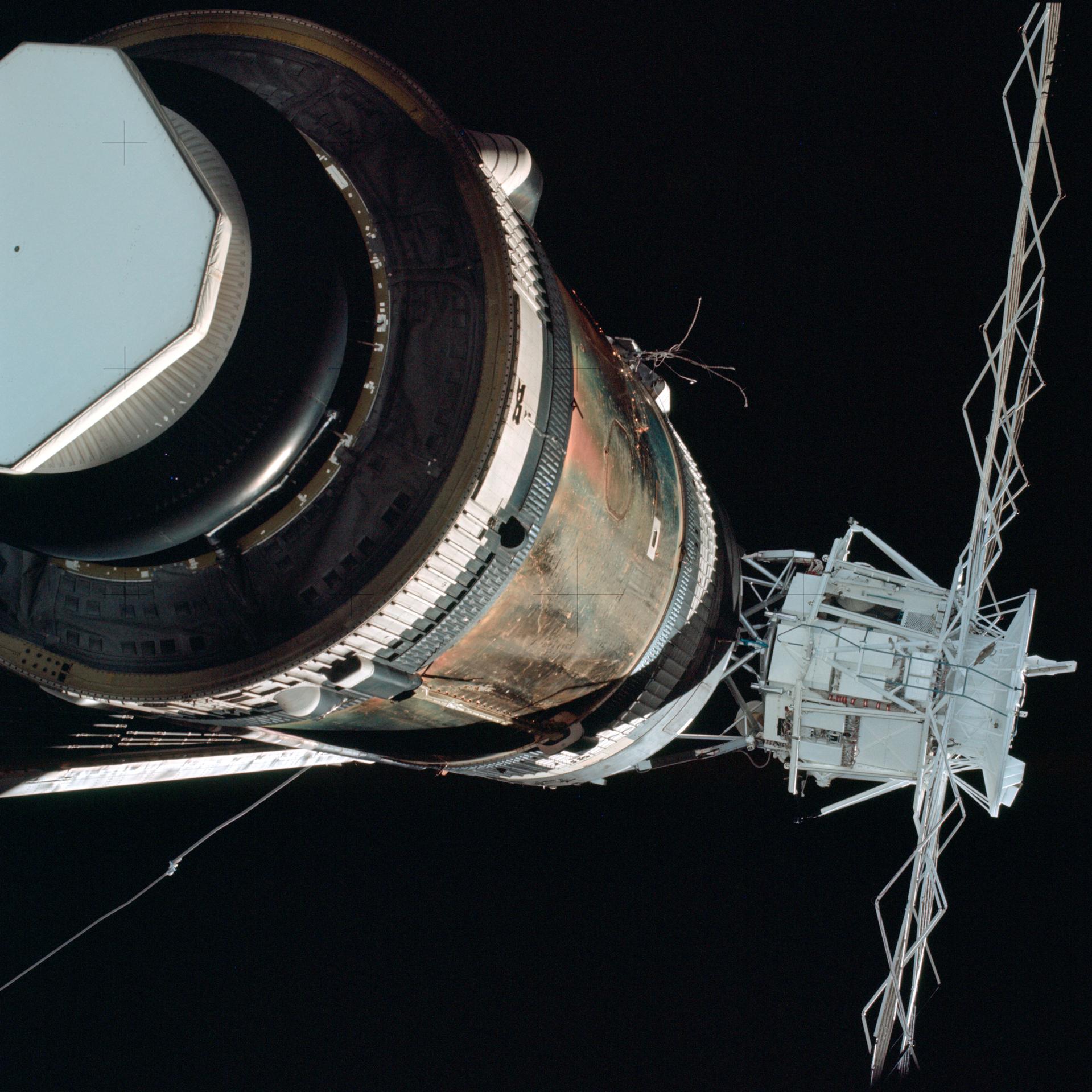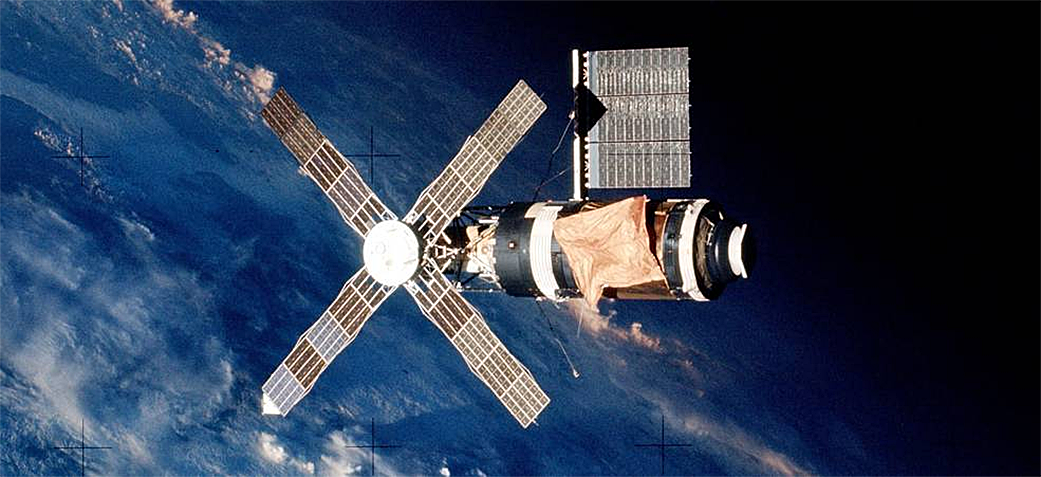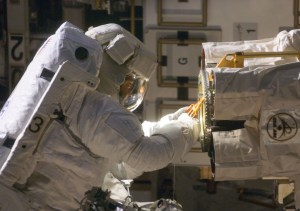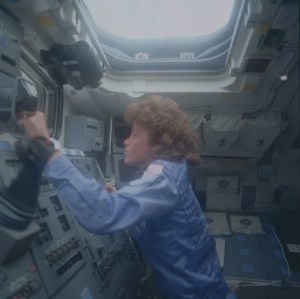Skylab, America’s first space station, launched on May 14, 1973, and immediately ran into serious trouble. NASA delayed the launch of the first crew, Commander Charles “Pete” Conrad, Pilot Paul J. Weitz, and Science Pilot Joseph P. Kerwin, by 10 days to allow managers and engineers to develop plans to save the station due to the loss of the micrometeoroid shield torn away during launch and the failure of the solar arrays to deploy. Repair procedures were tested on the ground and tools were loaded into the Command Module shortly before the crew’s launch. After a successful launch on May 25 and rendezvous with Skylab they performed an fly-around inspection of the station, observing that indeed the micrometeoroid shield was missing as was one of the solar arrays while the other was only partly deployed, held down by debris from the torn shield. The crew attempted to free the jammed array that day but were not successful. After entering the station the next day, the crew deployed a parasol that brought internal temperatures down to comfortable levels and they began their science experiments. But the lack of power from the missing and jammed solar arrays curtailed their activities.

Attention turned to freeing the jammed solar array. In the Neutral Buoyancy Simulator at Marshall Space Flight Center, Skylab 2 backup commander Russell Schweickart and Skylab 4 crewmember Edward Gibson practiced techniques that could be used during a spacewalk and relayed that information to the onboard crew. On June 7, 1973, on their 14th day in space, Conrad and Kerwin floated out of Skylab’s Airlock Module. They set up a 25-foot pole with cable cutter tool at the end that closed partway over the aluminum strap from the micrometeoroid shield that was holding down the solar array. Conrad used the pole as a handhold to translate down the solar wing and attached a rope to its structure. Kerwin closed the jaws on the cutter tool the rest of the way, slicing through the metal strap. The solar wing partially opened, but its hinge had frozen in the cold of space preventing it from fully opening. Conrad and Kerwin then both pulled on the rope to overcome the frozen hinge and the wing sprung fully open, bouncing the astronauts away—luckily their space suit tethers kept them from floating off into space. Once the wing opened, the individual solar panels deployed and shortly Mission Control notified the crew that they were generating power! Conrad and Kerwin climbed back inside Skylab after 3 hours and 25 minutes, the longest spacewalk in Earth orbit to date. The success of this repair EVA enabled NASA to plan with confidence the rest of the Skylab program that in terms of the amount and quality of research results obtained far exceeded preflight expectations.
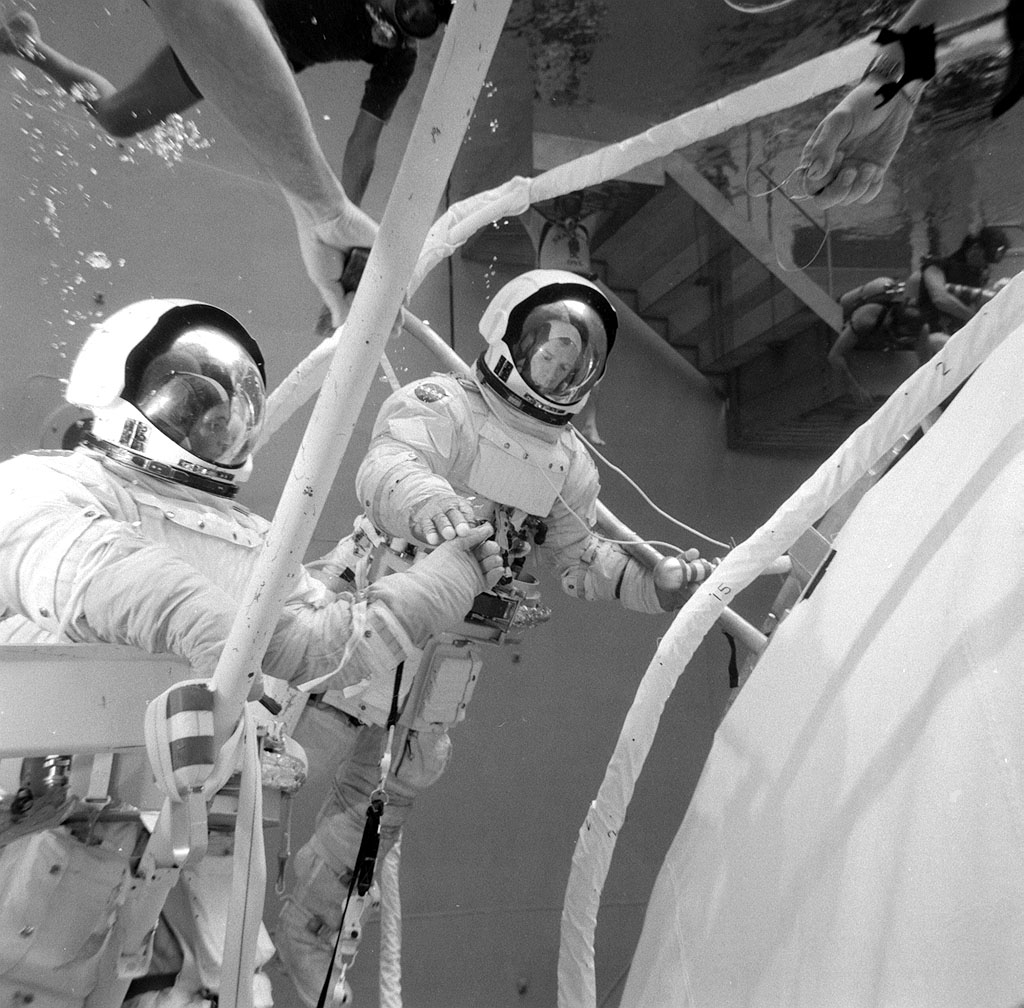
The last installment in this mini-series will bring the crewmembers home and summarize their accomplishments.
Read Skylab 2 back up Commander Rusty Schweickart’s oral history.
Read Skylab 2 Astronauts Paul Weitz’s and Joe Kerwin’s oral histories.




























